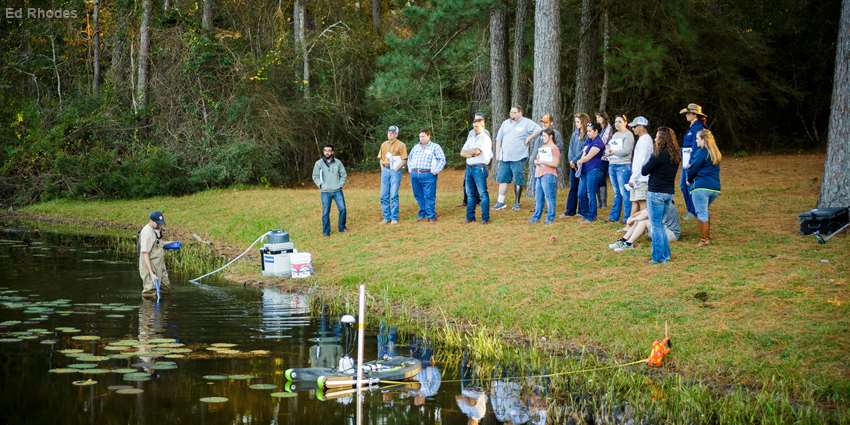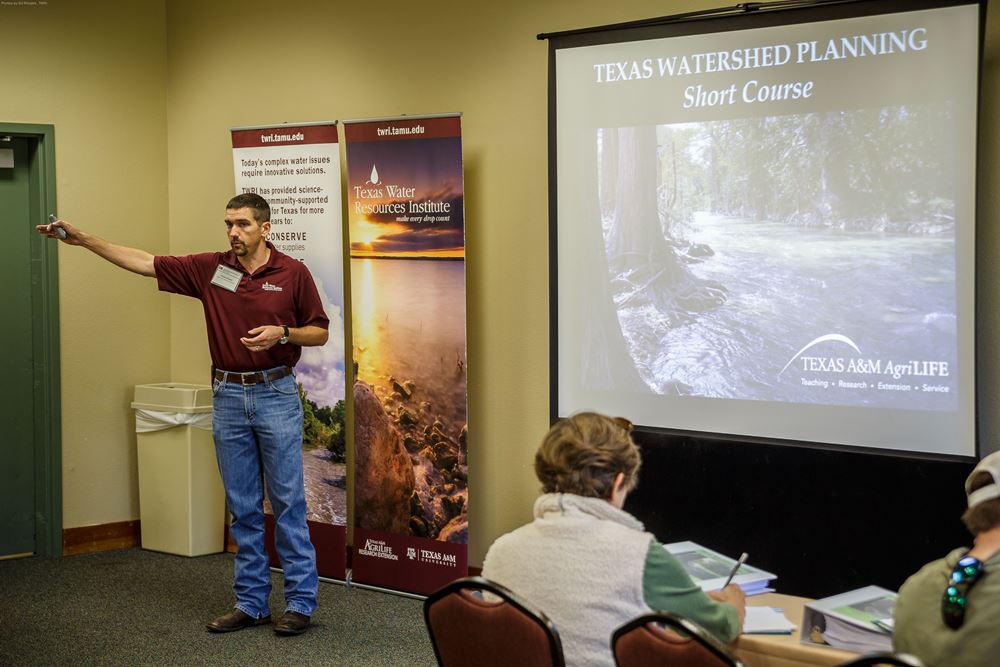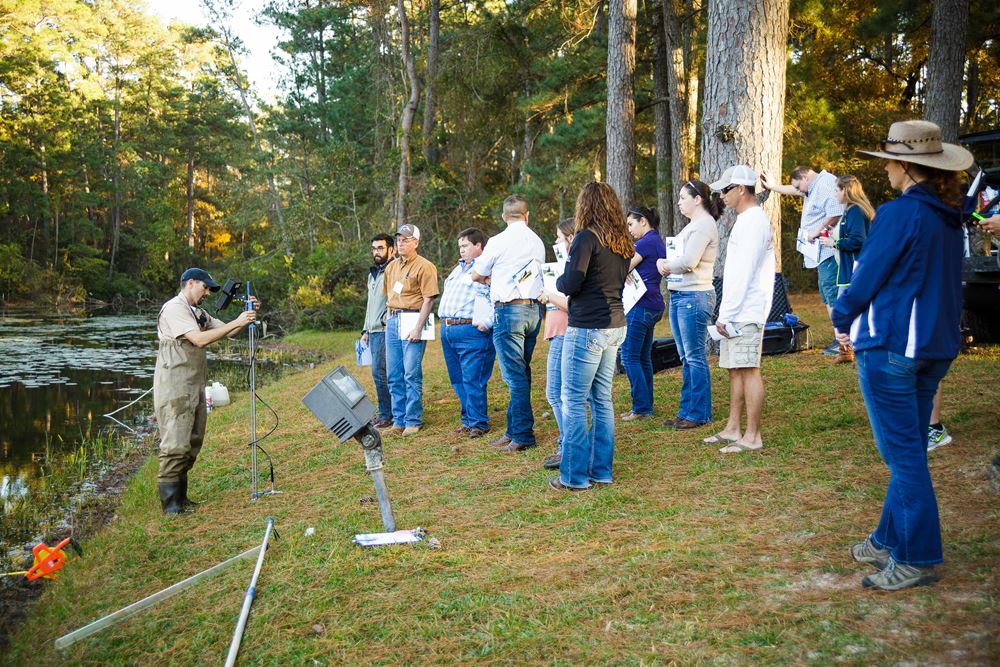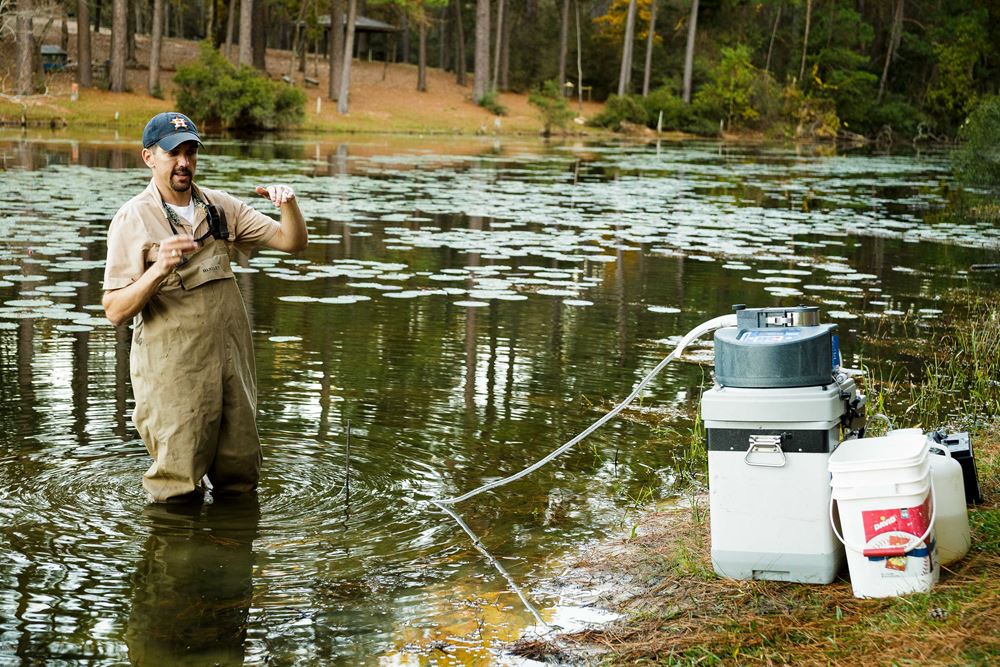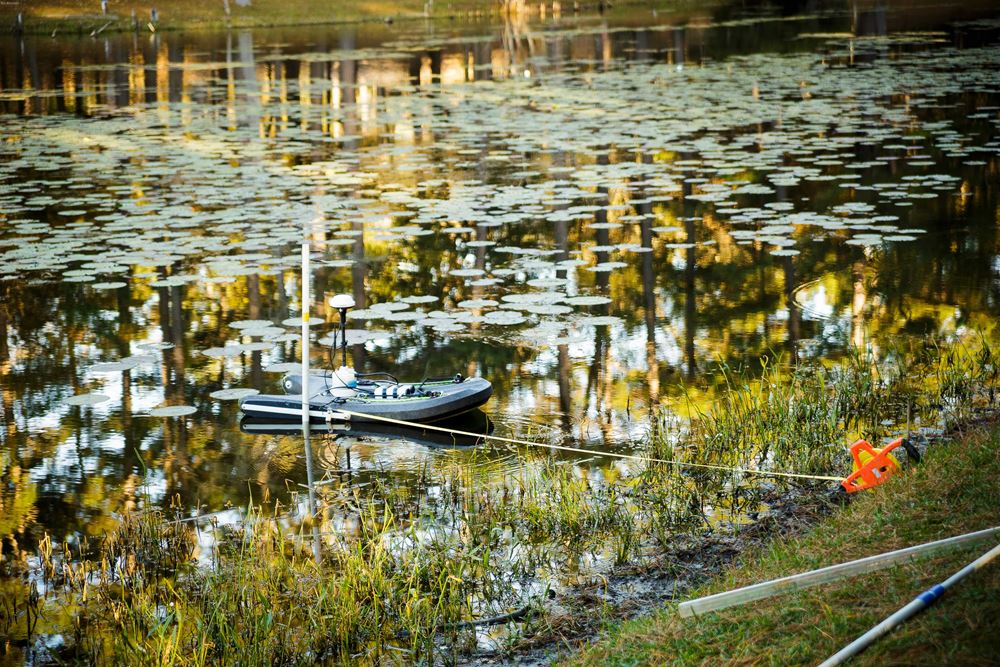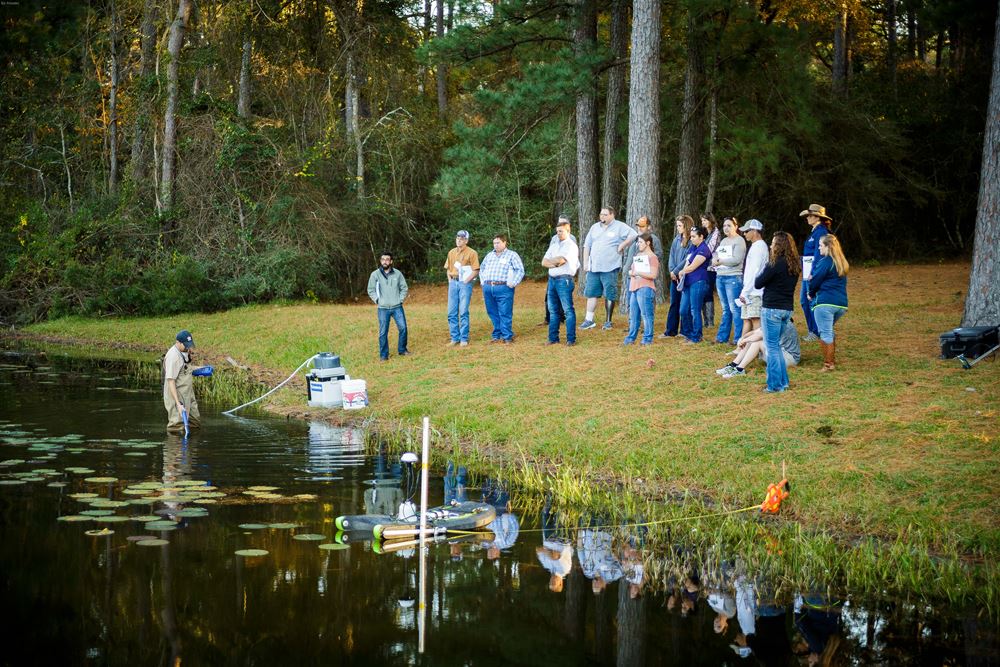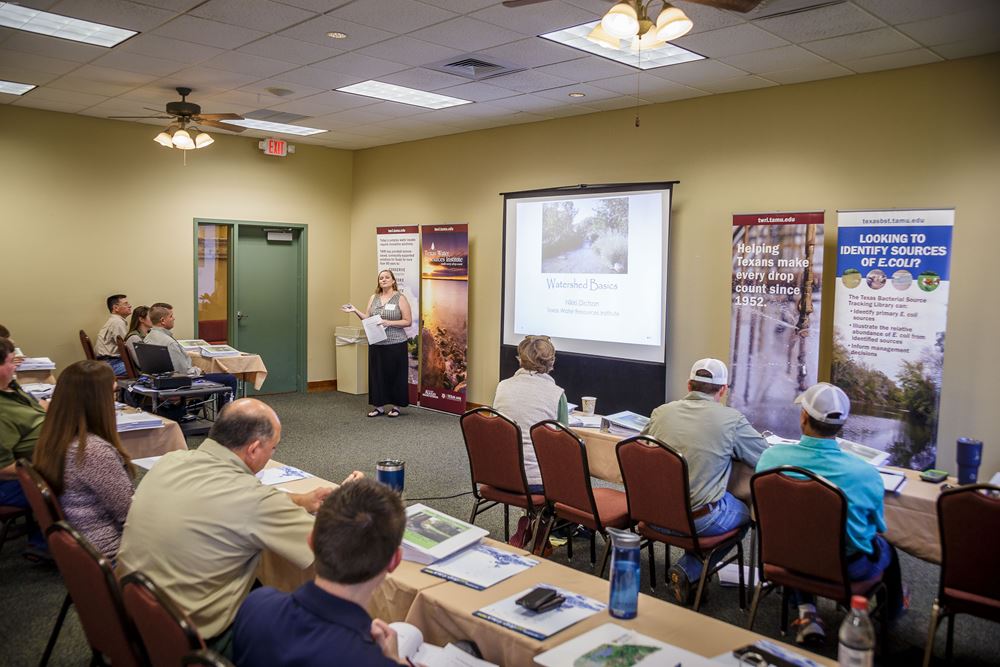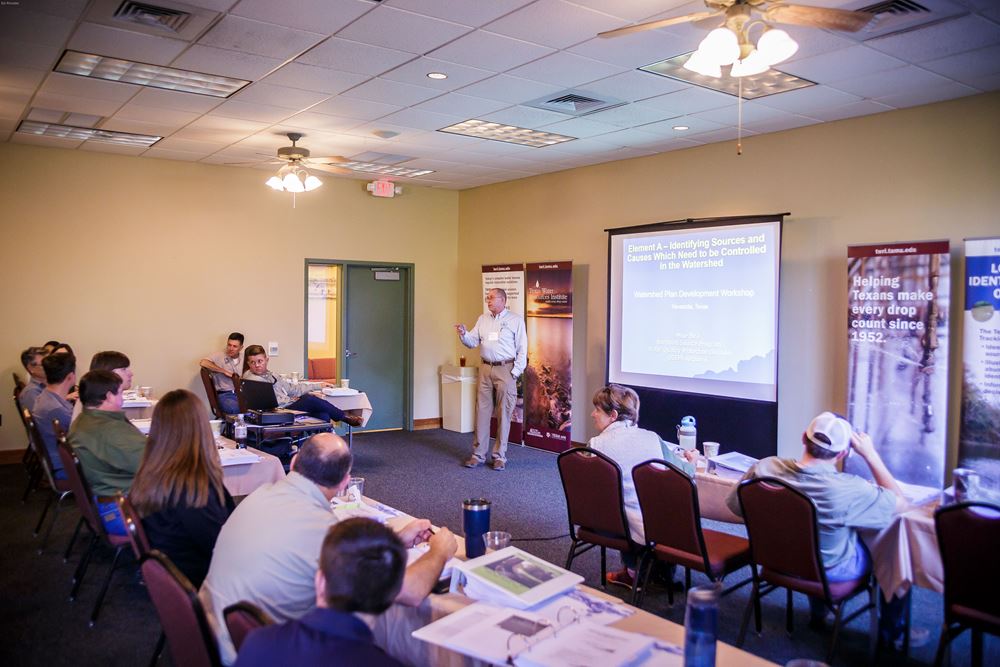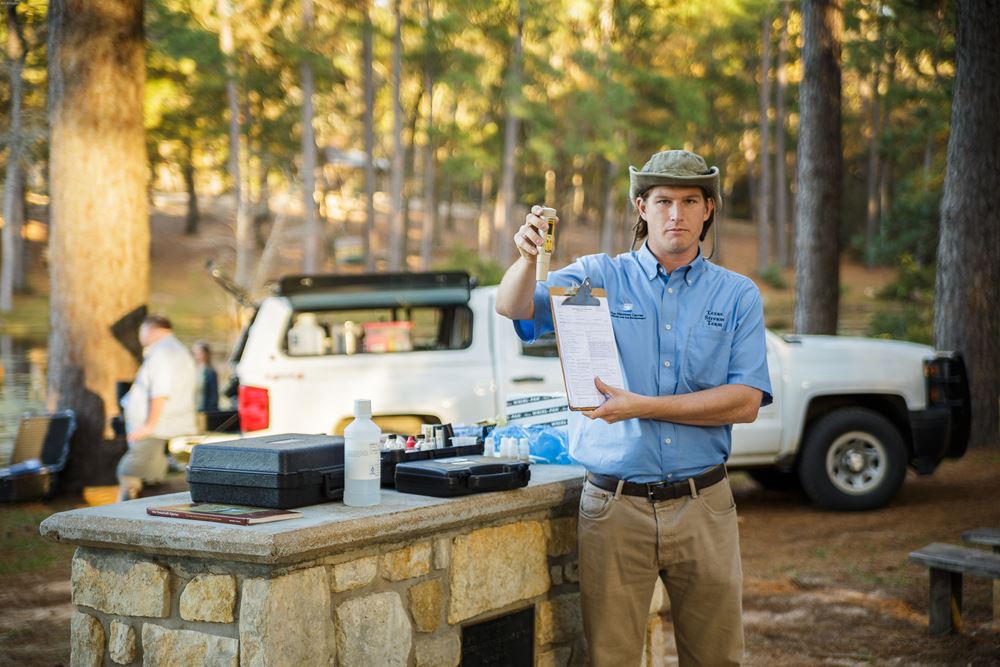The Texas Water Resources Institute (TWRI)’s Texas Watershed Planning Training Program recently held its 9th short course at Camp Allen Conference and Retreat Center near Navasota to train 30 watershed coordinators and other water resource professionals in watershed planning. The four-day course consistently receives excellent reviews and has educated around 300 professionals since the first course in 2008.
The course is one of the few in the country that builds upon the nine elements for watershed planning, as identified by the U.S. Environmental Protection Agency (EPA). It provides guidance on stakeholder coordination, education and outreach; data collection and analysis; and tools available for plan development. Watershed professionals use these tools to work with stakeholders for successful watershed planning efforts.
The Texas Watershed Planning Program is currently funded by EPA through the Texas State Soil and Water Conservation Board with funding from the Texas Commission on Environmental Quality in previous years.
Along with the short courses, water professionals can attend the biannual Texas Watershed Coordinator Roundtables. The program also offers other watershed trainings throughout the year.
Join the Watershed Coordinators listserv to receive updates and information about upcoming trainings, meetings and tools.
Dr. Lucas Gregory, TWRI research scientist, discusses the importance of working with local stakeholders when composing a watershed protection plan.
Photos by Ed Rhodes, TWRI.
1 of 10
Reflections on the lake at Camp Allen Conference and Retreat Center, where the 9th Texas Watershed Training short course was held.
Ed Rhodes
2 of 10
Gregory shows the group of attendees at the Texas Watershed Planning short course in Navasota how to conduct instantaneous stream flow measurements.
Ed Rhodes
3 of 10
Gregory explains the features and operation of an automated water sampler used in water quality monitoring.
Ed Rhodes
4 of 10
A river surveyor, which uses a Doppler to measure the river flow. The floating river surveyor is useful when a water body is too deep to wade into.
Ed Rhodes
5 of 10
Gregory illustrates how a multiparameter water quality sonde is used to instantaneously measure temperature, pH, dissolved oxygen and specific conductance, which are important measures in gauging water body health.
Ed Rhodes
6 of 10
Nikki Dictson, Texas A&M AgriLife Extension Service program specialist for TWRI, gives an overview of watershed basics to the group of water professionals.
Ed Rhodes
7 of 10
Mike Bira with the U.S. Environmental Protection Agency Region 6 explains the importance of Element A — identifying sources and causes of water quality impairments and concerns that need to be controlled in the watershed—of EPA’s nine elements of watershed planning.
Ed Rhodes
8 of 10
Michael Jones of the Texas Stream Team shows a specific conductivity meter and demonstrates its use to the watershed coordinators.
Ed Rhodes
9 of 10
Michael Jones, water resource specialist for the Meadows Center for Water and the Environment, explains the Texas Stream Team and how to instruct volunteers on using the monitoring kit.
Ed Rhodes
10 of 10

